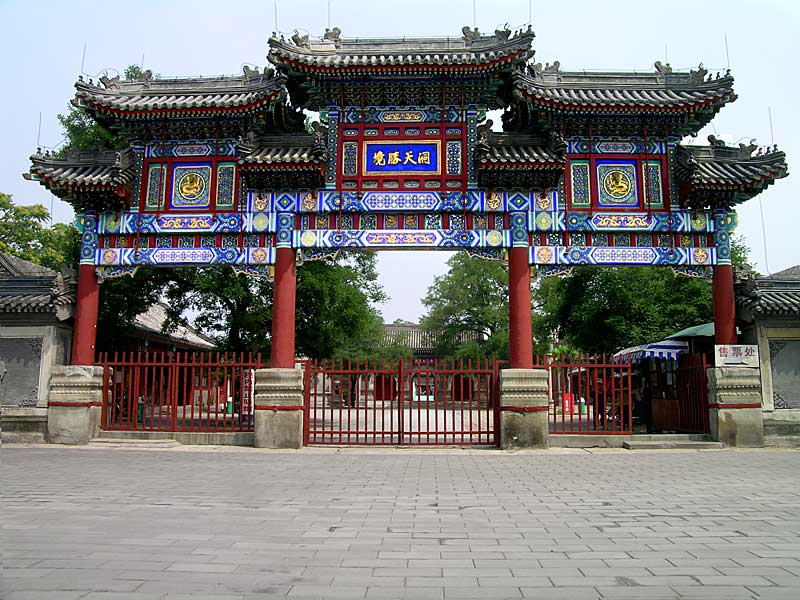| Baiyun Guan 白云观 (Báiyún Guān) was built in 739 during the Tang Dynasty (618 – 907). The Tang Dynasty was a period of expansion and unification for China. Various kingdoms were brought under central control and the borders were expanded. Without the constant fighting and defense expenditures made necessary by warring kingdoms, the Tang Dynasty was able to focus on cultural development and peaceful trade. The economy quickly grew and allowed a leisure class to develop that was devoted to literature, music, philosophy, and scholarship. Included in this exploration was the development of religious philosophy.
During the Tang Dynasty both Buddhism and Daoism flourished. One or the other would gain support depending on the Emperor's preference, but for the most part, both were supported.
During the reign of Empress Wu, from 690 to 705, she supported Buddhism as a political strategy to discredit her Daoist enemies and rivals. However, under Emperor Xuan Zong (玄宗 Xuán Zōng), who ruled from 712 to 756, Daoism was again the religion of the court. It was during the reign of Xuan Zong that Baiyun Guan was built.
Beijing was on the outskirts of the country at that time. The capital was in Chang'an, 长安 (Cháng'ān), in the center of what is China today. Beijing was called Ji, and its ancient center was quite near the White Cloud Temple. Ji was a logical place to establish a major monastery to cement the ties to the kingdom. It was near the northern borders and would serve as a cultural bulwark again the "barbarian" influences from north of the Great Wall. Both Daoism and Buddhism were already practiced throughout the area, having spread in ancient times to the north and strongly encouraged during the Northern Wei Dynasty (386-584) and succeeding dynasties. But having a temple and monks with ties to the Tang court helped strengthen the identity of the area as Tang, rather than as Xianbei, Xiongnu, Touba, Khitan, or Mongol; different peoples of the north who had ruled the area or had a presence in the area.
The pailou 牌楼 (páilou), or decorated archway, shown above, was built during the Ming Dynasty in 1443 under the reign of Zhengtong 正統. It has seven roofs and four pillars. The characters Dong Tian Sheng Jing 洞天胜竟 dòngtiān shèngjìng (traditional 竟勝天洞) are inscribed on the center of the gate. I asked a friend to translate, she said: " 洞天胜境 is a heavenly place far away from humen beings where only Gods can stay. It means when you start to practice Taoism you will see things differently. When you come to Bai Yun Guan you escape from the real world where you can experience another heavenly world."
As you can see, the four characters are packed with symbols and related meaning; poetry. It also refers to the teaching of Quanzhen Daoism, Complete Perfection Daoism, and its founder, Wang Chongyang (1113-1170). Wang Chongyang dug himself a tomb on a mountainside to contemplate the philosophy of Daoism. He became one of the Immortals of Daoist belief. Later, Baiyun Guan would become one of the centers of the Quanzhen tradition of Daoism.
|
